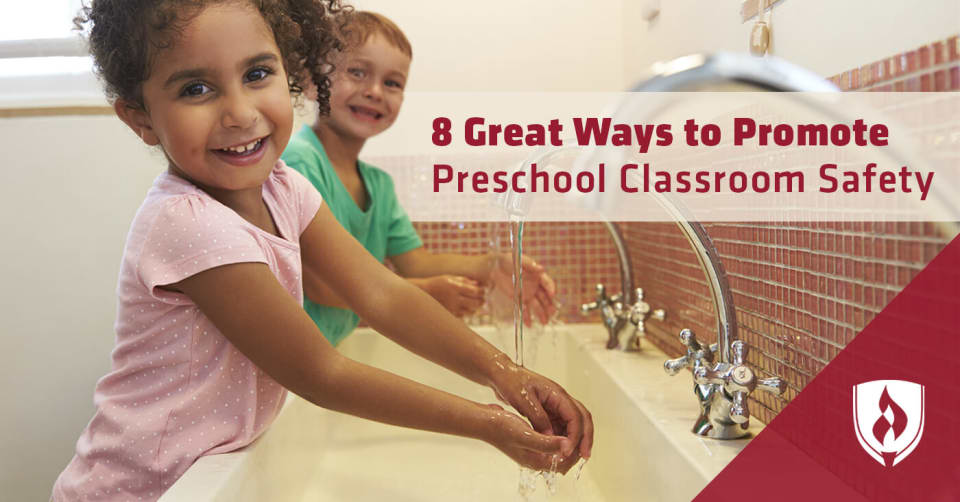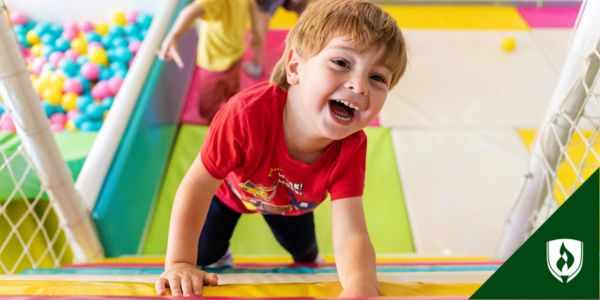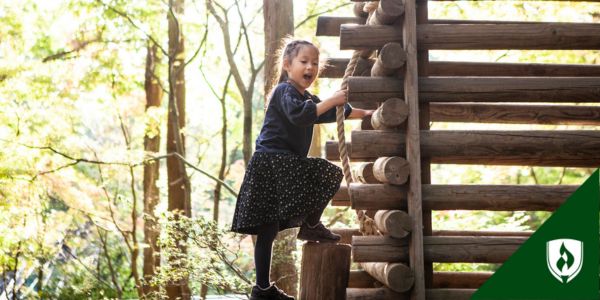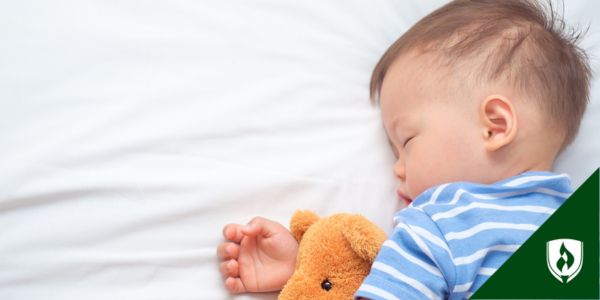
“Criss, cross, applesauce, spoons in the bowl!” a young preschool teacher exclaims as she demonstrates sitting on the ground, crossing her legs and placing her hands in her lap. Her preschool students follow suit with singsong voices and finally settle down on the rug.
Preschool teachers across the globe use creative techniques like these to help their students calm down so learning can take place. Not only do teachers need clever classroom management strategies up their sleeves, but they also need to make sure their classroom is a safe place that promotes learning.
It can be easy for classroom safety to slip teachers’ minds amid lesson plans and field trips, but it’s definitely not something to be ignored! A well-organized classroom that has safety procedures in place not only makes students feel more secure, but it also shows parents their children are being well cared for.
If you’re a preschool teacher looking for ways to implement classroom safety, keep reading. We connected with early childhood education (ECE) professionals to learn how they keep their learning environments secure and at low risk for harmful situations. Keep reading to learn some tried and true tactics for preschool classroom safety.
8 Preschool classroom safety tips
1. Keep dangerous supplies out of reach
Scissors, bulletin board tacks, glue – all things that shouldn’t be easily accessible for preschool-aged kids. Make sure to keep any sharp objects, choking hazards, poisonous materials and other potentially hazardous supplies on a high shelf or locked away in a cupboard.
The last thing you want is a student standing on their tippy-toes to reach a bin of sharp items on a just-out-of-reach ledge. When supplies like these are out and available during craft time, it’s important to talk with your students about how to properly use these tools.
“Be sure to take the time to review safety procedures with the children before adding to an open shelf in the art area,” says Mary Muhs, dean of the Rasmussen School of Education. “Then when children are using the materials, be sure to keep an eye open to help with safety if needed.”
2. Wash your hands
Regular hand washing is a standard procedure for most classrooms, but it’s also one that many preschoolers haven’t fully grasped yet. Set a good example by getting in the habit of properly washing your hands yourself. Be sure the water is warm but not too hot for that delicate preschooler skin. Make hand washing a typical part of your daily routine: before and after mealtimes, after bathroom breaks and during other messy moments in the day.
“Another healthy practice is to have children wash their hands upon entry to the classroom to help remove germs brought in from outside,” Muhs says. “Then, washing hands before heading home can help prevent germs from taking the ride home as well.”
3. Sanitize everything
Just like hand washing, cleanliness is key for keeping germs at bay and keeping yourself and your students healthy and happy. Make sure that you and your aide sanitize all of the toys, tables, chairs and other surfaces at the end of each school day. It’s important that these things aren’t just wiped clean but thoroughly sanitized.
“Although most of us know that we should clean the materials in our classrooms, what we don't consider is the difference between cleaning, sanitizing and disinfecting,” says Cheryl Hatch, an ECE professional at Mothers of Preschoolers. She explains that cleaning wipes away dirt and debris while sanitizing actually decreases the number of germs on a surface. If you make sanitizing a regular part of your end-of-the-day routine, you’ll help reduce the number of colds and illnesses your students (and you!) are exposed to.
4. Practice emergency plans
Emergency plans don’t do much good if your preschoolers don’t know the drill. Walk kids through the experience before your school’s first fire drill to prevent any crying or frightened sobs. Role play the whole event, from alarm to the moment when it’s safe to come back inside. Then when that first fire drill rings, your students won’t be alarmed.
Do the same thing with lockdown drills, tornado drills and other emergency safety plans. This will help children—and their parents for that matter—understand that their school and teacher takes safety seriously.
5. Follow through with consequences
Kids need boundaries to feel safe and it’s important they have rules to keep them in line. Many common preschool rules are in place to keep kids safe. When one of your students breaks a rule, make sure you follow through with a consequence.
“We always hold hands when we walk outside” could prevent a student from running into the parking lot and in front of a car. It’s not fun to discipline students, but it’s essential that they understand their boundaries and know you’ll uphold them if they choose to be rebellious.
“A logical consequence such as having to hold a teacher’s hand while walking to the playground may help the child to remember safety next time,” Muhs explains. She stresses that you should keep the consequences related to the situation, and never withhold food or playground time from a child.
6. Design the room properly
Giant toys, open closet doors and bookshelves can prevent you from seeing your students at all times. Make sure that when you arrange your classroom at the beginning of the year, you keep shelves and large objects in a place that won’t obstruct your view of students. It’s also important to design the room so students stay interested in the activities you provide for them.
“Too much room, and preschoolers think they are at an airport and the classroom appears to be a runway,” Hatch explains. “Too little room and children are frustrated by the lack of ability to really participate and explore the materials.” Bored or irritated kids can quickly discover new ways of getting into unsafe situations, so make it easy for them to stay busy with the safe play options you’ve planned.
7. Watch the floors
Kids spend a lot of time on the floor, which makes it a prime spot for safety hazards to arise. Floors should be clear of debris and toys that may cause someone to trip and fall, so make sure to involve your kids with regular cleanup procedures. Not only will you be saving yourself from stepping on an abandoned Lego, you’ll be helping students develop good habits for later in life.
Use carpet tape to prevent rugs from curling or slipping and periodically check for loose floorboards or tiles. Preschool-aged kids toddle around and fall occasionally, but by checking your classroom floors, you can help prevent an unnecessary accident.
8. Keep communication flowing
Keep an open line of communication between yourself and your students’ parents, as well as between yourself and your students. Your classroom is a community. Open communication will help you all work together to keep students safe.
Keep everyone up to date on new guidelines, what’s happening on field trips, your classroom policies and other emergency information. Become familiar with your students’ immediate families so you can quickly spot a suspicious person versus a parent stopping by for lunch with their child. Keep your fellow teachers and superiors updated as well so any situations that arise can be taken care of promptly and efficiently.
Managing your classroom
If you love kids and teaching, it’s a no-brainer that these simple classroom safety tips will make teaching environment more enjoyable for everyone. Now that you’ve got these handy safety pointers under your belt, learn some fun and functional ways to guide your youngsters in our article: 10 Proven Classroom Management Tips for Preschool Teachers.
RELATED ARTICLES:
- An Educator’s Survival Guide for Dealing with Difficult Parents
- 10 Tactics for Dealing with Tantrums in the Classroom
- What Is Spaced Learning? Reaping the Rewards of Repetition in the ECE Classroom
- The Real Problem with Pre-K: Digging into the Quality Gap
- Preschool Readiness: How to Be Confident Your Kid is Ready to Conquer the Classroom
- 5 Practical Preschool Teacher Skills You May Already Possess




